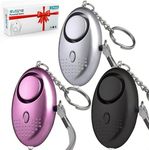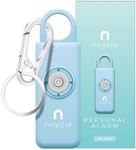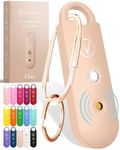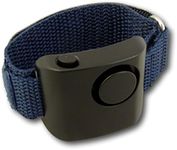Buying Guide for the Best Personal Safety Alarms
Personal safety alarms are essential devices designed to help individuals feel secure and protected in various situations. These alarms can be used to deter attackers, signal for help, or alert others to your location in case of an emergency. When choosing a personal safety alarm, it's important to consider several key specifications to ensure you select the best fit for your needs. Understanding these specifications will help you make an informed decision and choose a device that provides the level of security and convenience you require.Sound LevelThe sound level of a personal safety alarm is measured in decibels (dB) and indicates how loud the alarm will be when activated. This spec is crucial because a louder alarm is more likely to attract attention and deter potential threats. Sound levels typically range from 100 dB to 140 dB. Alarms with 100-110 dB are suitable for indoor use or quieter environments, while alarms with 120-140 dB are better for outdoor use or situations where you need to be heard over long distances. Consider where you will be using the alarm most frequently to determine the appropriate sound level for your needs.
Activation MethodThe activation method refers to how the alarm is triggered. Common methods include pressing a button, pulling a pin, or using a remote control. This spec is important because it affects how quickly and easily you can activate the alarm in an emergency. Button-activated alarms are straightforward and quick to use, while pin-pull alarms may offer added security against accidental activation. Remote control activation can be useful if you need to trigger the alarm from a distance. Think about your typical usage scenarios and choose an activation method that you can reliably and swiftly use under stress.
PortabilityPortability refers to the size, weight, and design of the personal safety alarm, which affects how easily you can carry it with you. This spec is important because a portable alarm is more likely to be with you when you need it. Alarms can range from small keychain designs to larger handheld devices. Smaller, lightweight alarms are ideal for everyday carry and can be attached to keys, bags, or clothing. Larger alarms may offer additional features but can be less convenient to carry. Consider your lifestyle and how you plan to carry the alarm to choose a design that fits seamlessly into your routine.
Battery LifeBattery life indicates how long the alarm can operate before needing a recharge or battery replacement. This spec is important because a reliable alarm should be ready to use at all times. Battery life can vary from a few hours to several months, depending on the type of battery and usage. Alarms with longer battery life are more convenient and require less frequent maintenance. If you prefer a low-maintenance option, look for alarms with extended battery life or rechargeable batteries. Consider how often you will use the alarm and choose a battery life that ensures the device is always ready when you need it.
Additional FeaturesAdditional features can include built-in flashlights, GPS tracking, or mobile app connectivity. These features can enhance the functionality and convenience of the personal safety alarm. Built-in flashlights can provide illumination in dark environments, GPS tracking can help locate you in an emergency, and mobile app connectivity can offer additional control and monitoring options. While these features are not essential, they can provide added peace of mind and utility. Think about your specific needs and whether any of these additional features would be beneficial for your safety and convenience.














